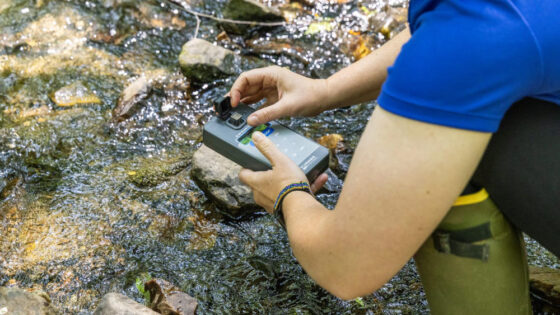Jackson, J.K., and D.H. Funk. 2018. Philosophical Transactions of the Royal Society B: Biological Sciences 374: 20180081.
Abstract
Salinity in freshwater ecosystems has increased significantly at numerous locations throughout the world, and this increase often reflects the use or production of salts from road de-icing, mining/oil and gas drilling activities, or agricultural production. When related to de-icing salts, highest salinity often occurs in winter when water temperature is often low relative to mean annual temperature at a site. Our study examined acute (96 h) responses to elevated salinity (NaCl) concentrations at five to seven temperature treatments (5–25°C) for four mayfly species (Baetidae: Neocloeon triangulifer, Procloeon fragile; Heptageniidae: Maccaffertium modestum; Leptophlebiidae: Leptophlebia cupida) that are widely distributed across eastern North America. Based on acute LC50s at 20°C, P. fragile was most sensitive (LC50 = 767 mg l−1, 1447 µS cm−1), followed by N. triangulifer (2755 mg l−1, 5104 µS cm−1), M. modestum (2760 mg l−1, 5118 µS cm−1) and L. cupida (4588 mg l−1, 8485 µS cm−1). Acute LC50s decreased as temperature increased for all four species (n = 5–7, R2 = 0.65–0.88, p = 0.052–0.002). Thus, acute salt toxicity is strongly temperature dependent for the mayfly species we tested, which suggests that brief periods of elevated salinity during cold seasons or in colder locations may be ecologically less toxic than predicted by standard 20 or 25°C laboratory bioassays.



